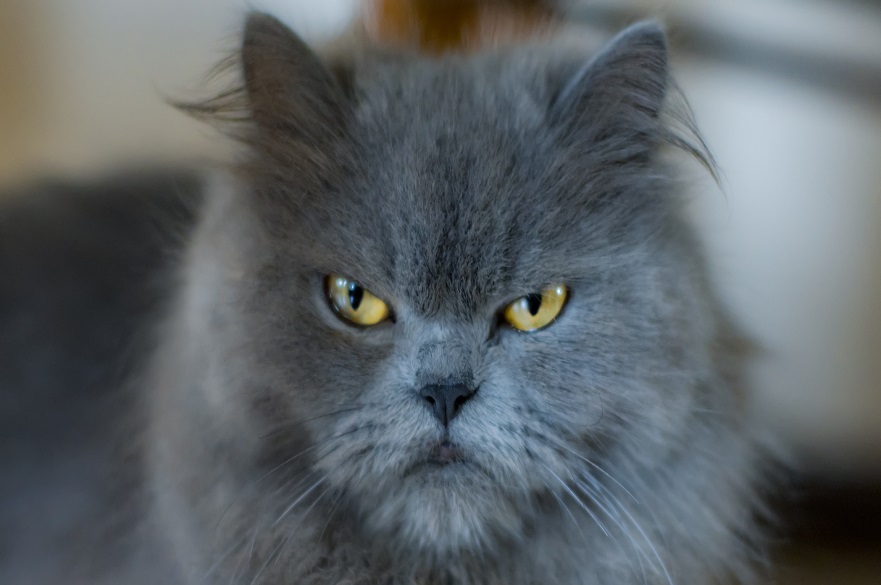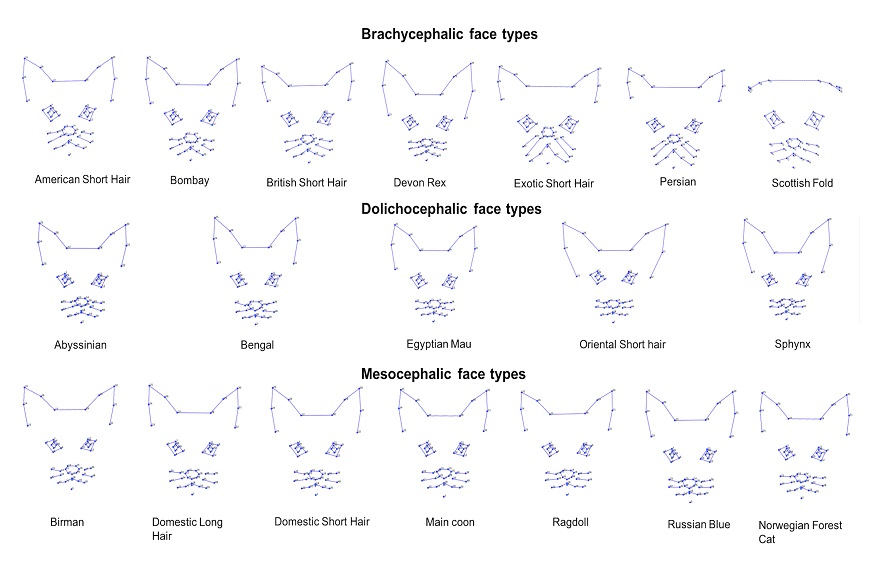Are grumpy cats really so grumpy? Study suggests selective breeding may have impacted cats’ ability to clearly express themselves
Some domestic cat breeds have been bred to such an extent that they may no longer be able to clearly express themselves to their owners and other felines via their faces, a new study suggests.
By Dave Rogers | Published on 11 January 2021
Categories: Press office; Research; School of Animal, Rural and Environmental Sciences;

The research – by cat behaviour and welfare specialists at Nottingham Trent University – argues that over time people have selectively bred cats based on human preferences and to display specific features that we find appealing, but which might make it more difficult for individuals to communicate effectively.
Breeding cats to have these features – such as brachycephalic breeds with flat faces, big eyes and foreheads and often seemingly grumpy expressions – could be affecting their ability to communicate how they are actually feeling.
The study involved the use of an analytical technique called geometric morphometrics, which enables the researchers to plot points on images of cats’ faces to correspond with their underlying facial muscles.
Changes in the location of these muscles are associated with changes in facial expressions displayed by cats, therefore the method can be used to identify how these plots move depending on an individual’s internal state, such as when they experience pain.
The faces of 19 popular breeds – including Persian, Bengal, Norwegian Forest, Egyptian Mau, Devon Rex and Scottish fold – with about 100 images across each breed, were used as part of the research.
Images of cats with ‘neutral’ facial expressions were chosen so that the researchers were able to distinguish changes caused by selective breeding specifically, rather than differences caused by specific expressions and underlying emotional states the cats may have been experiencing at the time.
The team placed 48 dots on the image of each cat’s face, enabling them to see how these points changed across all breeds.
While the different breeds of cats all had neutral expressions – and therefore the facial muscles technically should remain consistent – the researchers identified significant variations in how the dots were distributed, illustrating how selective breeding over time has altered cats’ faces.
What this might mean is that the neutral facial expression in one breed might now look the same as the expression of pain or discomfort in another.
To test this, they looked at how facial features of each breed corresponded with features known to be associated with the expression of pain in domestic shorthaired cats – narrower ears positioned further apart, narrowed eyes and the nose and mouth positioned closer together.
The researchers found that, while the system could differentiate between pain and no pain in domestic shorthaired cats, these differences were no longer detectable when analysed across wider, more diverse populations.
Brachycephalic cats – those with flat faces which have gone through some of the most extreme selection to have a certain appearance – had greater pain-like expressions compared to breeds with more proportioned features (mesocephalic) and those with elongated faces (dolichocephalic).
And they found that for particular flat-faced breeds, their neutral (not in pain) faces produced scores indicative of greater pain than most other breeds, including those actually in pain.
It is already known that some cat breeds are more likely to suffer physical health problems as a result of how they have been bred. For example, brachycephalic cats such as the exotic short hair or modern Persian can have issues with their eyes and breathing.

The faces of 19 popular breeds were used as part of the research
“Our work suggests that breed-related issues may not only affect cats’ physical health, but also their communicative abilities” said lead researcher Dr Lauren Finka, a feline behaviour and welfare specialist in Nottingham Trent University’s School of Animal, Rural and Environmental Sciences.
She said: “During the course of the cat’s domestication, we have vastly altered their physical appearance, creating a diverse range of modern cat breeds. Our preference for them to have features that we find cute or similar to the expressions we recognise in humans – such as cuteness, vulnerability or a frowning grumpy appearance – may have unintentionally disrupted their ability to clearly express themselves and communicate.
“Many cat owners will be aware of the different facial expressions their cats display and that these expressions may change depending on what the cat needs or how they are feeling. Our findings suggest that at a species level, these signals may be disrupted; if certain breeds have been inadvertently selected to look grumpy or in pain, we might be motivated to care for or give these cats more attention than they would prefer, or conversely be unable to tell when they might actually be in pain and need our help.
“Cats may also struggle to communicate with one another which might lead to increased conflict in multi-cat homes.”
The study, published in the journal Frontiers in Veterinary Science, also involved the University of Lincoln and São Paulo State University in Brazil.
Notes for Editors
Press enquiries please contact Dave Rogers, Public Relations Manager, on telephone +44 (0)115 848 8782, or via email.
NTU was named University of the Year 2019 in the Guardian University Awards. The award was based on performance and improvement in the Guardian University Guide, retention of students from low-participation areas and attainment of BME students. NTU was also the Times Higher Education University of the Year 2017, and The Times and Sunday Times Modern University of the Year 2018. These awards recognise NTU for its high levels of student satisfaction, its quality of teaching, its engagement with employers, and its overall student experience.
The university has been rated Gold in the Government’s Teaching Excellence Framework – the highest ranking available.
It is one of the largest UK universities. With nearly 32,000 students and more than 4,000 staff located across four campuses, the University contributes £900m to the UK economy every year. With an international student population of more than 3,000 from around 100 countries, the University prides itself on its global outlook
The university is passionate about creating opportunities and its extensive outreach programme is designed to enable NTU to be a vehicle for social mobility. NTU is among the UK’s top five recruiters of students from disadvantaged backgrounds and was awarded University of the Year in the UK Social Mobility Awards 2019. A total of 82% of its graduates go on to graduate entry employment or graduate entry education or training within six months of leaving. Student satisfaction is high: NTU achieved an 87% satisfaction score in the 2019 National Student Survey.
A total of 82% of its graduates go on to graduate entry employment or graduate entry education or training within six months of leaving. Student satisfaction is high: NTU achieved an 87% satisfaction score in the 2019 National Student Survey.